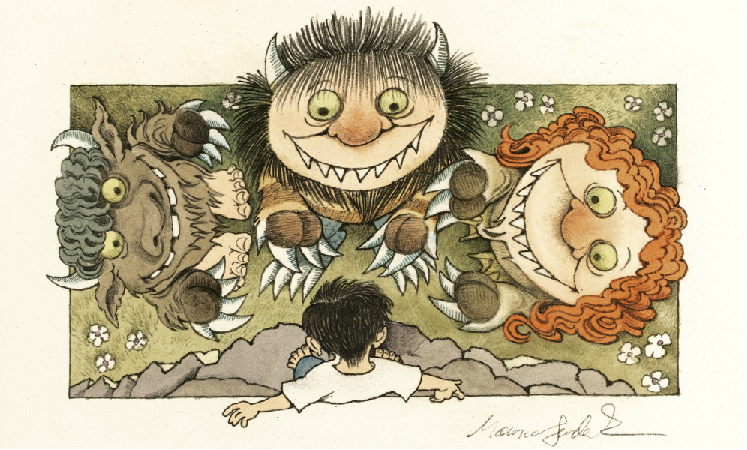Two weeks ago I discussed
an eBay sale of original
TV Guide magazine cover art, caricatures
by the late, great
Ronald Searle of "All in the Family" cast members Carroll O'Connor and
Jean Stapleton. The original artwork, probably the first to be offered anywhere since the artist's
death on December 30, sold with the Buy It Now feature within 24 hours of its listing.
Now the same seller is offering another scarce piece of original Searle artwork, a caricature of
comedienne Phyllis Diller also commissioned, we are told, by
TV Guide. The artwork, which
was not used as a magazine cover, dates circa 1972 according to the seller, the same year as
the "All in the Family" cover. I do not know in what issue it was published or, indeed, if it ever
actually saw print, but I do know that
TV Guide's Fall Preview issue of September 14-20, 1968
had an article
on Phyllis Diller. This 1968 issue then certainly
could have featured this
illustration, particularly as this piece clearly bears an earlier Searle signature than the 1972
"All in the Family" cover art. I would welcome any information any reader might have as to its
publication history. Until I know more, I'm going to tentatively date this artwork to 1968. I've
included in this post a photograph of the actress from approximately this date as well. For
whatever it's worth, I don't think this caricature is as successful as the "All in the Family"
cover.
Lightning did not strike twice, and this artwork did not sell within the first 24 hours of its 30-day
listing on eBay. The Buy It Now price is again $4,500. There is no Make Offer option.
Shipping is $100.



.bmp)
.bmp)










































